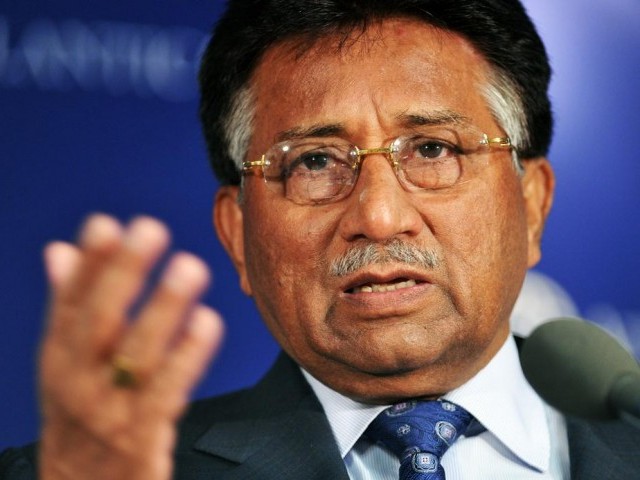
Upholding Sindh High Court’s two-year-old verdict to remove former president Pervez Musharraf’s name from the no-fly list, the top court has observed that movement of any individual cannot be restricted arbitrarily on mere dislike.
Chief Justice Anwar Zaheer Jamali has authored the 13-page verdict on the federal government’s appeal against the high court’s June 12, 2014 order to remove Musharraf’s name from the Exit Control List. The judgment holds the federal government’s plea is devoid of merits.
Treason trial: Musharraf’s team to seek adjournment
“We cannot lose sight of the fact that under Article 15 of the Constitution freedom of movement is one of the fundamental rights guaranteed to every citizen of the country which cannot be abridged or denied arbitrarily on mere liking or disliking without any lawful justification. More so, when Article 4 of the Constitution further guarantees right to every individual to be dealt in accordance with law,” the detailed verdict reads.
The order explains that Exit from Pakistan (Control) Ordinance, 1981, read with Exit from Pakistan (Control) Rules, 2010 provides the complete mechanism for restricting the movement of any person from going abroad.
But the five-judge larger bench believes in Musharraf’s case, this option was not exercised by the federal government.
Musharraf’s departure: Govt misunderstood SC order, say PTI experts
The court held that all matters relating to the custody of an accused, restricting his liberty or freedom of movement are to be dealt with by courts hearing criminal cases against him or by the federal government under the rules.
The superior courts are, therefore, normally reluctant in passing orders of such nature except in some exceptional circumstances, which was not the position in Musharraf’s case as he was under trial in different courts.
The verdict also points out that the judges had more than once asked the Attorney General of Pakistan about the federal government’s stance as to whether they intended to retain Musharraf‘s name in ECL but he was unable to come out with any specific instructions. He only said the inclusion was solely on account of directions issued by the court and for no other reason.
Musharraf cut deal with govt, says aide
The SC observed the memorandum for placing Musharraf’s name on ECL was issued on April 5, 2013 – three days before the ad-interim order, passed by the apex court for the restriction of Musharraf’s movement. The memorandum was issued without disclosing any reason and did not contain reference of any order or directions of the high court or the apex court.
“It is safely deducible that the order, for all intent and purposes, was a temporary order, which stood merged/vacated in terms of the final order dated 03.07.2013,” the verdict states.
The top court observed the Sindh High Court correctly appreciated the relevant facts of the case, aptly taking into consideration the case-law cited at the bar, and recorded valid and cogent reasons for granting requisite relief to Musharraf.
Musharraf — the departure deal
The verdict says the high court was mindful of the sensitive nature and political hype of the issue, and as an abundant precaution it had also suspended the operation of impugned judgment for a period of 15 days to enable the federal government to avail any other appropriate remedy, including their right to challenge the judgment before the apex court.
Published in The Express Tribune, April 2nd, 2016.

1730360426-0/Menendez-Brothers-(2)1730360426-0-165x106.webp)
1732534556-0/taylor-(14)1732534556-0-165x106.webp)
1725872216-0/Tribune-Pic-(3)1725872216-0-165x106.webp)
1732532771-0/BeFunky-collage-(89)1732532771-0-165x106.webp)

1732530440-5/Copy-of-Untitled-(85)1732530440-5-270x192.webp)

1732534225-0/Express-Tribune-(13)1732534225-0-270x192.webp)








COMMENTS
Comments are moderated and generally will be posted if they are on-topic and not abusive.
For more information, please see our Comments FAQ